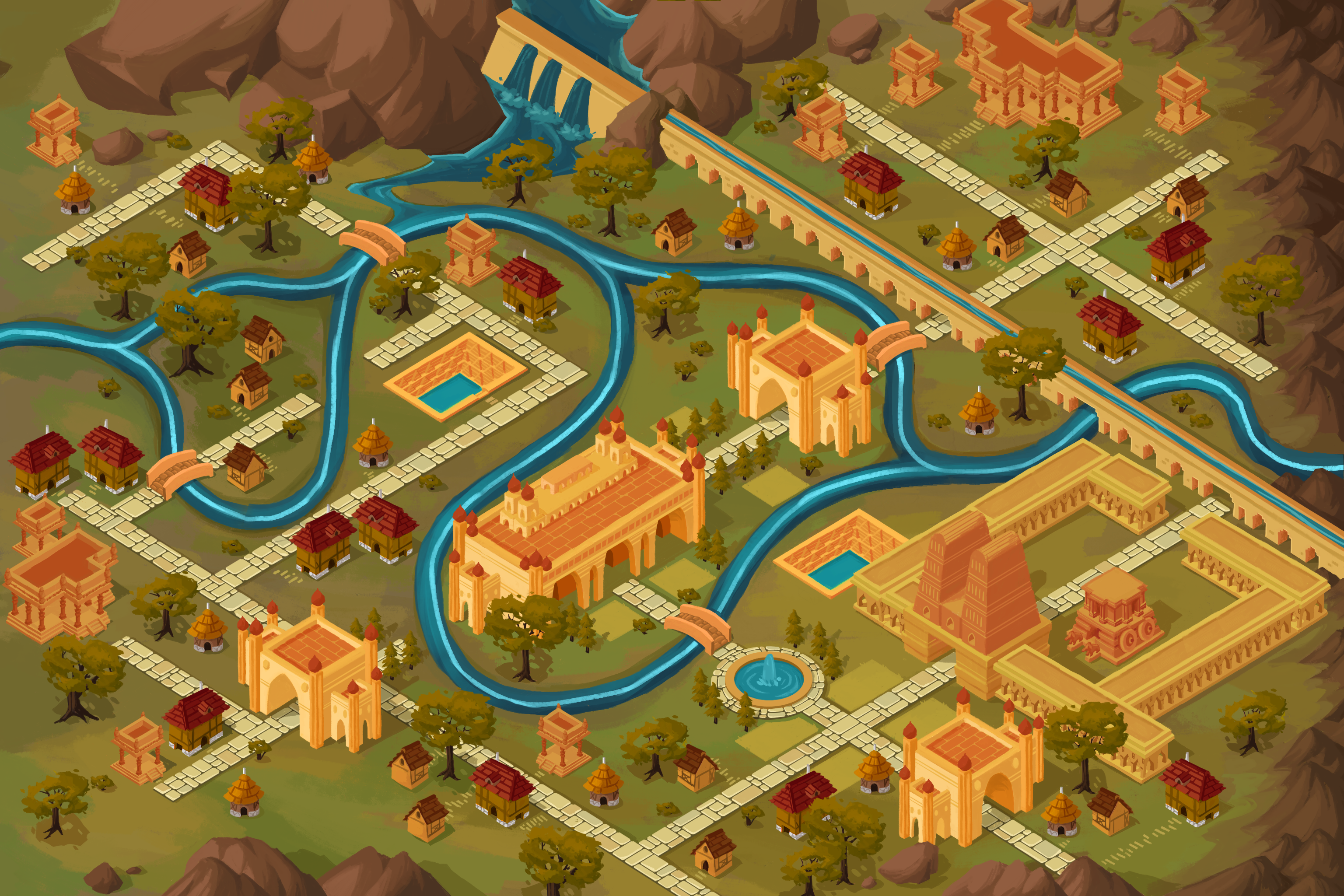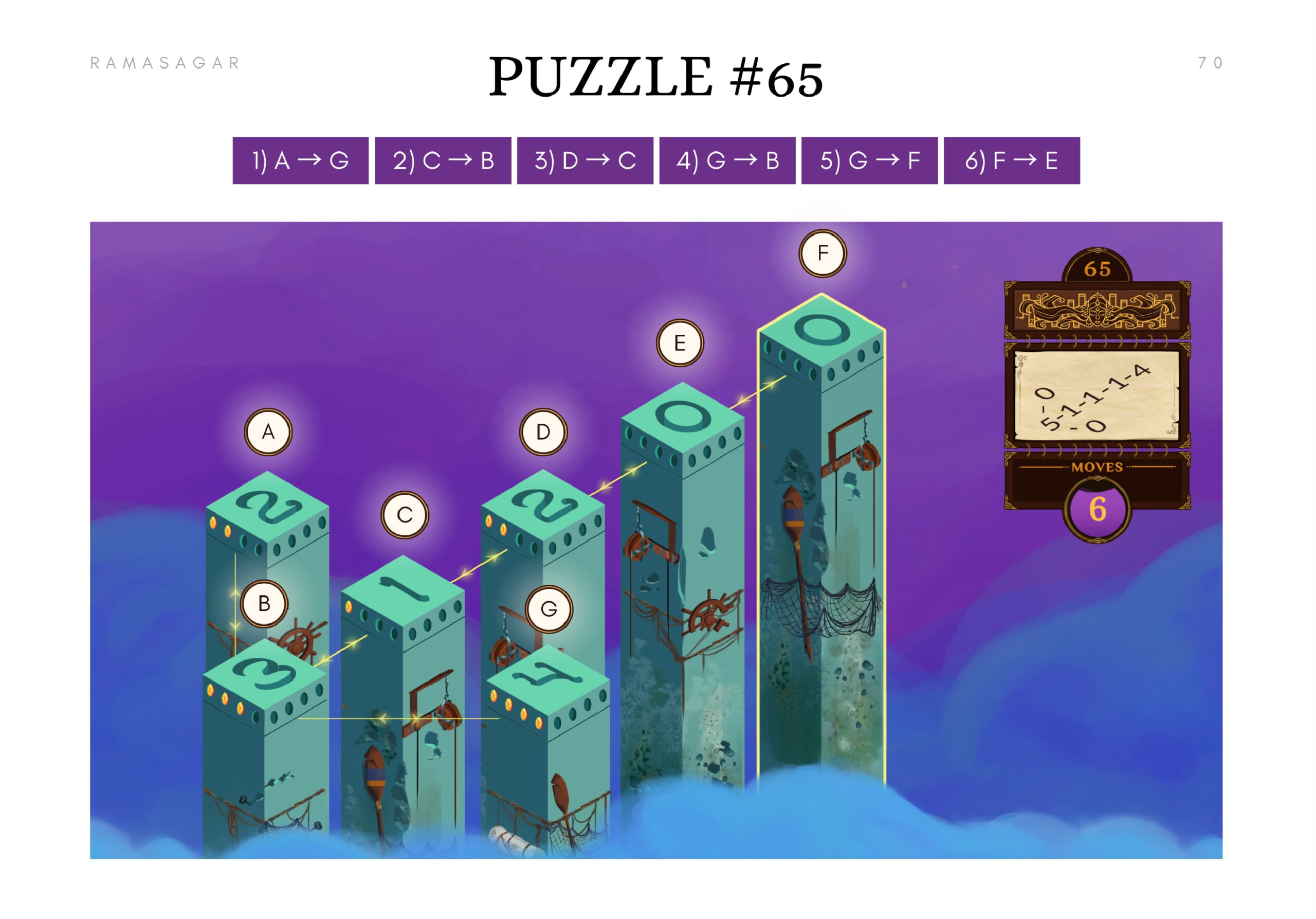We at Holy Cow Productions are extremely excited to launch our game: Mystic Pillars – Remastered. Initially released in 2020, the game has received a remaster and is tailored to work on PlayStation 5.
This game was a brainchild of the studio’s aspiration to marry ancient traditions with modern gaming. The Indian board game Ali Guli Mane, or the internationally known variant Macala, inspired the mechanics of our game. Staying aligned with our vision, we also drew inspiration from cultural landmarks in India. This includes the UNESCO World Heritage site in Hampi, India. The length and breadth of the game’s experience are steeped in the vibrant hues of Indian tradition.

Our ambition also extended to supporting a diverse array of languages. Holy Cow Productions is a studio based in India and therefore, it is natural that the game is textually available in four Indian languages – Kannada, Hindi, Telugu, and Tamil. It also incorporates 17 other languages from across the globe like Japanese, Catalan, Hebrew, and many more. Additionally, the game has Kannada and English voiceovers. Mystic Pillars – Remastered features a rich tapestry of the culture in the Kingdom of Zampi. For the iteration, we wanted to engage our audience in an elevated experience. We devised our plan with three major categories in mind: Player Experience, Art, and Story.
Player Experience
A discussion that spearheaded the process was an upgrade in the UI. While retaining the artistic essence of the older version, we redesigned the UI to be minimal, match the new art, suit bigger screens, and be harmonious with the PlayStation interface. The newer UI is dynamic and reflects the player’s progress as they advance through the game. A refined UX was another major improvement that had to be brought about. After conducting intensive research and taking feedback from our player base, we fashioned game mechanics that would allow players to go back in terms of game moves. Enabling players to reconsider their decisions in the puzzles enhanced the ease and delight in the game mechanics.

Art
Our changes in the art department encompassed an overhaul in the in-game maps, cutscenes, gallery, and resolution. We began with the maps as they function as a central and unifying force in the game. Based on real-life locations and instances, they change in appearance as the player progresses through the game. We hoped to enliven and polish them. The line weight of the previous maps was incongruent with the style of the rest of the game. To accomplish the new maps, backgrounds were made stylized and artistic. Shadows were added to each asset to create depth, dimension and seamlessness. Inspired by the cultural attractions in India like the Tungabhadra dam in Hosapete, the Hampi dam and water ducts in Hampi, and the Huligemma Temple in Huligi, we breathed new life into the maps and revived them from the previous iteration. Streets and walkways along with key buildings were added in each of the villages. Delving into greater detail—bridges were connected by walkways in the in-game map of Hosapete, water wheels were included in the Huligi village, dedicated fort spaces were added in the Sanapura village, market squares started decorating the village of Anegundi, a magical mother tree and its shrine began gracing Bukkasagara, flood plains and warehouses were included to enrich the Ramasagara village, large educational institutes and monuments were put in Achalpur in order to dignify it, and a central palace and gateways were added leading to the palace in Hampi.

The focus then fell on the cutscenes. They were remade to contain camera pans to showcase the scale of the pillars, textures and patterns on backgrounds, more emotive facial expressions for the characters, greater grandiosity of the palace interiors, and an intensified atmosphere to improve the dramatization of the story. Adding to the momentum we had, we polished and updated the gallery page with concept and fan art. The credit scene received its own renewal to complement the rest of the art. Next, we upgraded all the assets in the game from 2K to 4K to provide players with a well-rounded experience.
Finally, we hoped to showcase all the heart and thought we poured into the artistic remastering. That desire led to the creation of our art book; it is available on PlayStation 5, as a part of the deluxe edition of the game!
Story
While we were happy with the storyline from the original game, we were keen on taking it to the next level. In our pursuit of augmenting everything, we rewrote the dialogue and re-recorded all the English voiceovers. It helped in creating a resonance between the players and the narrative. But it didn’t feel enough. We’re well aware that the puzzles in our game challenge the player mathematically–a skill that may not be honed and enjoyed by all. Introducing the Parihara! The Parihara is a comprehensive step-by-step guide to conquer all the puzzles. It was specifically designed for those who would like to enjoy the narrative and art without grinding to a halt due to the logical and numerical trials. The Parihara, like the art book, is available as a part of the deluxe edition.

We’re absolutely thrilled about the remaster of our game and can’t wait for PlayStation’s audience to get their hands on it. Mystic Pillars – Remastered can be downloaded exclusively on PlayStation 5 on March 19th, 2024 at 8 a.m. PST. The game is also available as a part of PlayStation Plus. We hope you have as much fun playing it as we had making it!
Blog written by Simran Rohra, Narrative Designer at Holy Cow Productions
